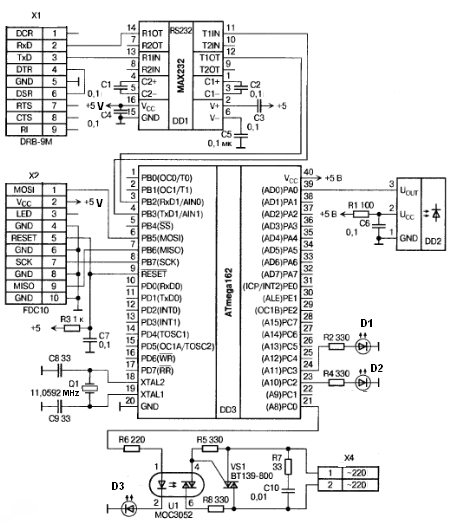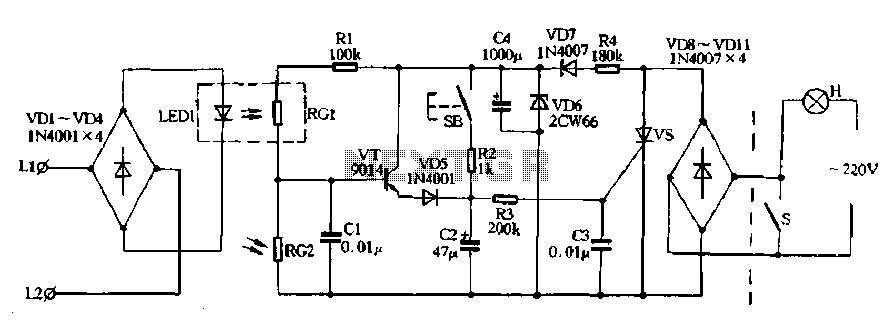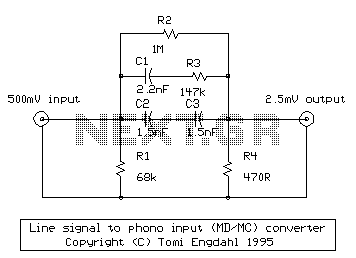
5 Minute Signal

For the past year and a half, a group based in Ann Arbor, Michigan, named GO-Tech has been formed, uniting individuals interested in creating projects using technology, such as hardware, software, metal, and wood. This initiative is referred to as Do It Yourself Tech (DIYTech). The group convenes monthly to present projects and engage in discussions. The most recent meeting, held on January 13th, featured a contest where participants were invited to build and demonstrate devices. The contest, known as The Five-Minute Timer Contest, aimed to design a timer for presentations, providing audible or visual signals when time was up. Portability, uniqueness, and durability were considered advantageous. Prizes were generously supplied by O'Reilly, publishers of Make. One participant created a traffic signal-based timer named 5 Minute Signal, which allows time settings from one minute and up in one-minute increments. The project involved modifying a plastic traffic signal purchased from Oriental Trading Company, using a Bare Bones Board (BBB) Arduino-compatible microcontroller for control and accurate timing. The hardware setup included the BBB, a pushbutton control switch, and three relays to manage the red, yellow, and green lights. The software was developed to facilitate basic operation: pressing the button starts the timer, with the green light indicating the first four minutes, followed by a yellow light for one minute, and a red light signaling the end of the five minutes. Other contest entries included an innovative sundial timer and a large servo-driven dial that popped a balloon if the presenter exceeded their time. The attendees voted, and the traffic signal timer tied for Best Timer with the sundial, which won the Coolest Timer award. A copy of the Best of Instructables book was awarded as a prize. Another similar project was presented, featuring a full-size reclaimed traffic signal with wireless remote control, a custom PCB, and a wooden project box. The meeting also included discussions on EMC and other presentations, making it a creative and informative event. Attendance at future GO-Tech meetings is encouraged for those in the southeast Michigan area.
The 5 Minute Signal project exemplifies a practical application of microcontroller technology in creating a visually engaging and functional timer. The Bare Bones Board (BBB) serves as the core of the circuit, facilitating the control of the timing mechanism and the operation of the traffic signal lights. The circuit design integrates three relays, each responsible for activating one of the colored lights: red, yellow, and green. The relays are connected to the output pins of the BBB, allowing for precise control based on the programmed timing intervals.
The pushbutton switch, connected to a digital input on the BBB, initiates the timing sequence when pressed. The software is programmed to monitor the elapsed time and control the relays accordingly. For instance, during the initial four minutes, the green light is activated, signaling that the presenter is within the allotted time. As the timer approaches the five-minute mark, the software transitions to activate the yellow light for one minute, followed by the red light to indicate that the time is up.
The design also allows for adjustable time settings, enabling users to select intervals from one minute up to five minutes. This feature is implemented through a user interface, potentially using additional buttons or a rotary encoder, which would modify a variable in the software that determines the timing sequence.
The project showcases not only the technical aspects of electronics and programming but also highlights the importance of user interaction and visual feedback in the design of practical devices. The integration of aesthetic elements, such as the traffic signal design, enhances the user experience while serving a functional purpose in time management during presentations. Future iterations of this project could explore the addition of wireless capabilities, allowing for remote operation or integration with other devices, further enhancing its functionality and user engagement.For the past year and a half I (Mark) have been part of an Ann Arbor, Michigan based group named GO-Tech. The common thread among the group members is that each of us is interested in making things using technology (combining hardware, software, metal, wood, etc.
). I refer to it as Do It Yourself Tech (DIYTech). The group meets monthly to pres ent projects and have interesting discussions. I attend when I am able; it is a fun, enriching after hours activity. At the most recent meeting that took place on January 13th, there was a contest in which everyone was invited to build a device and demonstrate it at the meeting. As Dale (the group organizer and leader) described it: The Five-Minute Timer Contest goal is to design a timer to time presentations at our meetings.
It should semi-accurately time the presenter, and give some audible or visual indication when their time is up. Portability, coolness, and robustness will be helpful. Cool prizes supplied by O`Reilly, publishers of Make. I created a traffic signal based timer that I named 5 Minute Signal. The time is actually settable to one minute and up (in one minute increments). To build it, I hacked an inexpensive plastic traffic signal (about one foot tall) that I purchased from Oriental Trading Company.
To control the signal and provide accurate time keeping, I used my trusty Bare Bones Board (BBB) Arduino-compatible microcontroller board. The hardware is fairly simple (the BBB, a pushbutton control switch, and 3 relays to control the red, yellow, and green lights) and the software was fun to write.
I put the whole thing together the weekend before the GO-Tech meeting. Basic operation is as you would expect: Push the button to start the timer. When the time interval is set to 5 minutes, the green light will stay on for the first 4 minutes, followed by one minute of yellow, and then red at the end of 5 minutes (the green and yellow intervals are shorter when the interval is 2 minutes or less). More details are available in these documents: The other contest entries included a very clever and well-made artificial sundial timer (by Jim) and another with a large servo-driven dial (by Don) that, if the presenter went too far over the allotted time, popped a balloon to get everyone`s attention.
The meeting attendees voted and in the end I tied with the sundial for Best Timer and the sundial won the Coolest Timer award. I walked away with a copy of the Best of Instructables book (thanks O`Reilly). There was one more 5 Minute Timer project presented at the meeting (it arrived too late for the contest).
Peter put together a traffic signal based timer similar to mine that uses a full size (reclaimed) traffic signal that he purchased on eBay. His impressively polished project includes a wireless remote control (something I considered but did not have time to include), a custom printed circuit board, and a wooden project box.
Schematic (PDF). The meeting also included an interesting talk about EMC and some other presentations. Overall, it was a creative, fun and informative evening. If you are in the southeast Michigan area, I highly recommend that you attend an upcoming GO-Tech meeting This entry was posted on Wednesday, January 21st, 2009 at 11:11 pm by Mark Smith and is filed under Code, Diversions, DIYTech. You can follow any responses to this entry through the RSS 2. 0 feed. Both comments and pings are currently closed. 🔗 External reference
The 5 Minute Signal project exemplifies a practical application of microcontroller technology in creating a visually engaging and functional timer. The Bare Bones Board (BBB) serves as the core of the circuit, facilitating the control of the timing mechanism and the operation of the traffic signal lights. The circuit design integrates three relays, each responsible for activating one of the colored lights: red, yellow, and green. The relays are connected to the output pins of the BBB, allowing for precise control based on the programmed timing intervals.
The pushbutton switch, connected to a digital input on the BBB, initiates the timing sequence when pressed. The software is programmed to monitor the elapsed time and control the relays accordingly. For instance, during the initial four minutes, the green light is activated, signaling that the presenter is within the allotted time. As the timer approaches the five-minute mark, the software transitions to activate the yellow light for one minute, followed by the red light to indicate that the time is up.
The design also allows for adjustable time settings, enabling users to select intervals from one minute up to five minutes. This feature is implemented through a user interface, potentially using additional buttons or a rotary encoder, which would modify a variable in the software that determines the timing sequence.
The project showcases not only the technical aspects of electronics and programming but also highlights the importance of user interaction and visual feedback in the design of practical devices. The integration of aesthetic elements, such as the traffic signal design, enhances the user experience while serving a functional purpose in time management during presentations. Future iterations of this project could explore the addition of wireless capabilities, allowing for remote operation or integration with other devices, further enhancing its functionality and user engagement.For the past year and a half I (Mark) have been part of an Ann Arbor, Michigan based group named GO-Tech. The common thread among the group members is that each of us is interested in making things using technology (combining hardware, software, metal, wood, etc.
). I refer to it as Do It Yourself Tech (DIYTech). The group meets monthly to pres ent projects and have interesting discussions. I attend when I am able; it is a fun, enriching after hours activity. At the most recent meeting that took place on January 13th, there was a contest in which everyone was invited to build a device and demonstrate it at the meeting. As Dale (the group organizer and leader) described it: The Five-Minute Timer Contest goal is to design a timer to time presentations at our meetings.
It should semi-accurately time the presenter, and give some audible or visual indication when their time is up. Portability, coolness, and robustness will be helpful. Cool prizes supplied by O`Reilly, publishers of Make. I created a traffic signal based timer that I named 5 Minute Signal. The time is actually settable to one minute and up (in one minute increments). To build it, I hacked an inexpensive plastic traffic signal (about one foot tall) that I purchased from Oriental Trading Company.
To control the signal and provide accurate time keeping, I used my trusty Bare Bones Board (BBB) Arduino-compatible microcontroller board. The hardware is fairly simple (the BBB, a pushbutton control switch, and 3 relays to control the red, yellow, and green lights) and the software was fun to write.
I put the whole thing together the weekend before the GO-Tech meeting. Basic operation is as you would expect: Push the button to start the timer. When the time interval is set to 5 minutes, the green light will stay on for the first 4 minutes, followed by one minute of yellow, and then red at the end of 5 minutes (the green and yellow intervals are shorter when the interval is 2 minutes or less). More details are available in these documents: The other contest entries included a very clever and well-made artificial sundial timer (by Jim) and another with a large servo-driven dial (by Don) that, if the presenter went too far over the allotted time, popped a balloon to get everyone`s attention.
The meeting attendees voted and in the end I tied with the sundial for Best Timer and the sundial won the Coolest Timer award. I walked away with a copy of the Best of Instructables book (thanks O`Reilly). There was one more 5 Minute Timer project presented at the meeting (it arrived too late for the contest).
Peter put together a traffic signal based timer similar to mine that uses a full size (reclaimed) traffic signal that he purchased on eBay. His impressively polished project includes a wireless remote control (something I considered but did not have time to include), a custom printed circuit board, and a wooden project box.
Schematic (PDF). The meeting also included an interesting talk about EMC and some other presentations. Overall, it was a creative, fun and informative evening. If you are in the southeast Michigan area, I highly recommend that you attend an upcoming GO-Tech meeting This entry was posted on Wednesday, January 21st, 2009 at 11:11 pm by Mark Smith and is filed under Code, Diversions, DIYTech. You can follow any responses to this entry through the RSS 2. 0 feed. Both comments and pings are currently closed. 🔗 External reference





